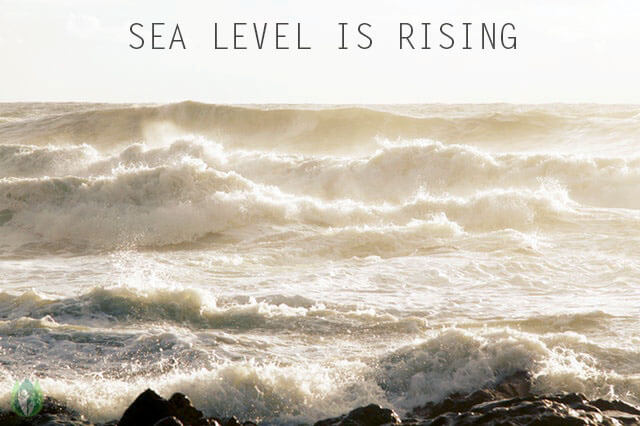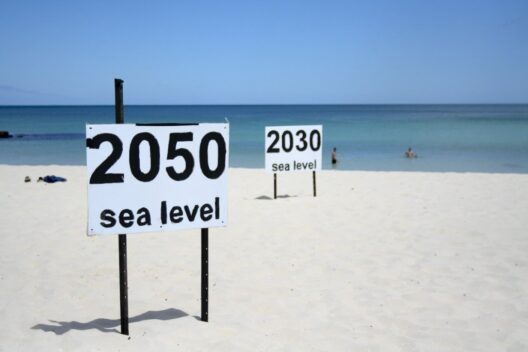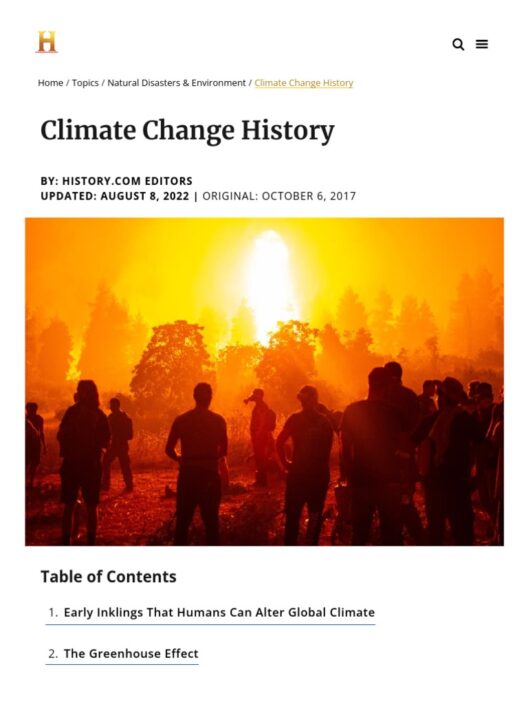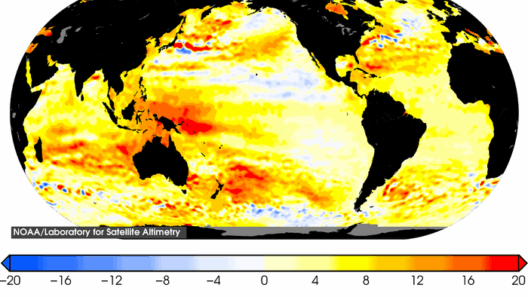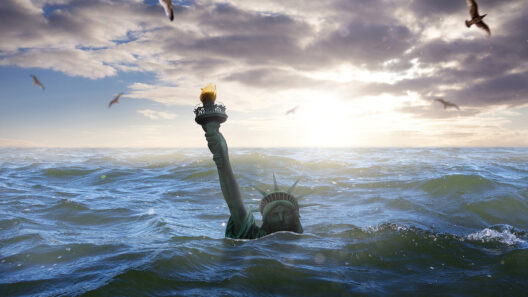The inexorable rise of sea levels has become an unremarkable reality for many coastal communities around the world. Yet, beneath this observation lies a complex web of geological, climatic, and anthropogenic factors that demand thorough examination. Understanding the causes and effects of rising ocean levels is crucial not only for environmental scientists but for policymakers, urban planners, and the general populace, whose lives are intricately intertwined with the shifting tides. This discussion seeks to illuminate the various dimensions of this pressing issue and provoke a deeper contemplation of its implications.
Global warming has emerged as the most prominent catalyst for sea level rise. The increase in atmospheric temperatures, predominantly attributed to greenhouse gas emissions, leads to two significant phenomena: thermal expansion of seawater and the accelerated melting of glaciers and ice sheets.
When the Earth’s temperature ascends, seawater undergoes thermal expansion—an increase in volume resulting from heat absorption. This relatively slow process contributes to rising levels over time. Additionally, the planet’s polar regions are experiencing dramatic ice loss. The Greenland and Antarctic ice sheets, containing vast reserves of freshwater, have witnessed alarming rates of melting. As these icy behemoths break apart and release their contents into the ocean, sea levels rise with a swift and relentless urgency.
Although global warming stands at the forefront of discussions surrounding sea level rise, another critical factor continues to play an essential role—the tectonic activity of our planet. The movement of tectonic plates can lead to subsidence in certain regions, where land sinks relative to sea levels. This process, when combined with rising waters, exacerbates local flood risks and other environmental challenges. It becomes evident that understanding sea levels requires a multifaceted approach that incorporates both climatic and geological factors.
The repercussions of rising sea levels extend far beyond the immediate environment. They impact ecosystems, society, and the economy in profound ways. Coastal habitats such as mangroves and coral reefs serve as vital buffers against storm surges and erosion. However, as sea levels rise, these critical ecosystems face inundation and degradation, threatening the biodiversity they harbor. Species that rely on these environments for sustenance and reproduction find their survival increasingly precarious, leading to potential cascading effects throughout the food web.
Human populations residing in coastal areas are particularly vulnerable. Over a billion people live within a few meters of the high tide line, and this number is likely to increase as urbanization continues apace. With thicker coastal populations, the risks posed by rising sea levels magnify. Increased flooding, saltwater intrusion into freshwater supplies, and displacement of communities underline the hardship faced by those living in affected areas. The challenge of relocation adds layers of socio-economic complexity, fueling debates over environmental justice and the rights of displaced people.
Economically, the impact of sea level rise is staggering. Infrastructure such as roads, bridges, and utilities in coastal areas is increasingly at risk. The cost of adaptation—ranging from building sea walls to restoring natural barriers—can run into billions, straining local and national budgets. Moreover, as coastal communities grapple with the flooding and infrastructural damage, there are far-reaching implications for industries reliant on coastal ecosystems, including fishing, tourism, and shipping.
Adaptation strategies must be implemented to cope with the realities of sea level rise. These strategies may encompass a multitude of approaches, from engineered solutions like seawalls and levees to nature-based strategies such as wetland restoration and reforestation. The latter not only offers a buffer against rising waters but also enhances biodiversity and carbon sequestration, aligning environmental and economic interests in a sustainable way.
It is crucial to foster collaboration among governmental entities, NGOs, and local stakeholders to create effective, community-based plans. The fight against rising sea levels is not solely a scientific or political concern but a collective endeavor requiring robust engagement from all sectors of society. Awareness-raising initiatives, including educational programs and public forums, can empower communities to confront the challenges posed by changing ocean levels while preserving their cultural heritage and identity.
The discourse surrounding sea level rise is evolving from one of complacency to a more conscientious understanding of interconnected systems. As communities begin to recognize their fragility in the face of this threat, the urgency for collective action grows ever more palpable. Rethinking urban planning, implementing sustainable practices, and investing in community resiliency are paramount in the fight against this global phenomenon. Each incremental step, however small, can contribute to a more sustainable future where humanity and nature coexist harmoniously.
In conclusion, the implications of rising sea levels compel a reexamination of our relationship with the environment. By dissecting the myriad causes and far-reaching effects, we can foster a more profound understanding of our role in addressing this critical issue. As stewards of our planet, it is imperative that we confront the rising oceans not with despair, but with determination and innovation, striving to safeguard not only landscapes but also the lives interwoven with them.



